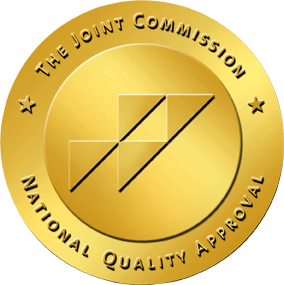Marijuana Addiction Treatment

Overuse of marijuana can lead to addiction and open the door to other more addictive and damaging substances. Marijuana addiction treatment at Vogue Recovery Center is evidence-based and addresses the reasons why you misuse marijuana, so recovery is more sustainable. At Vogue, you will learn a healthier way of life that doesn’t include drugs or alcohol and will allow you to feel more fulfilled and present.
What Is Marijuana?
Marijuana comes from the cannabis plant and can be cultivated for different uses. All marijuana plants contain a ratio of 2 types of cannabinoid compounds, which make up the majority of its nearly 500 chemical elements. Products for non-drug use such as hemp fiber or topical creams are derived from plants that have higher levels of cannabidiol (CBD) and low levels of tetrahydrocannabinol (THC). Plants specifically grown for drug use are high-intoxicant types. They have large amounts of the psychoactive chemical tetrahydrocannabinol (THC) and lower cannabidiol (CBD) levels. To create a drug from the cannabis plant, the leaves and buds are picked and dried, ground up, and then bagged for sale and use. Marijuana is commonly ingested by smoking the leaves or putting it in baked goods.Marijuana Legalization
In some states, marijuana can be used medically by obtaining a medical use card from a doctor. In other states, marijuana is legal to use both medically and recreationally. Each state has legal parameters for use such as the age of the user, the amount held, and plant-growing regulations. As of 2022, marijuana is legal in 33 U.S. states in some form. Nationwide legalization of marijuana has been debated for several years. Conflicting information, ethical standards, and mixed opinions have kept it at bay until recent laws allowing the use of medical marijuana shifted some people’s perspective on the drug.Is Marijuana Addictive?
Some say, “yes;” others say, “no.” However, many people agree on two things:
- Marijuana can easily lead to other substance use.
- Marijuana is more potent now than ever – In fact, the potency of marijuana in the 1960s through the 1980s was around 2% THC. Between 1995 and 2014, THC content has increased by 212%. Now you can find marijuana from 17% THC concentration to upwards of 95% in products like edibles, dab, shatter, and oil.
The ratio of THC to CBD and the larger amounts of the chemical compound has caused some to question the addictive nature of marijuana. An average marijuana plant specifically bred for purposes of medical or recreational use has a potency level of 20-30%. That’s a much higher percentage than the plants cultivated 20 years ago when they were 4% potency levels with THC.
As far as extracts and substance concentrate, the THC potency levels can be 40% to 80%, according to DEA and drug-industry reports. Some people believe that to be addicted to a substance, you must experience physical withdrawal symptoms and psychological effects when you stop use. Some research shows that regular marijuana use may come with cravings, physical symptoms, and psychological dependence on the drug. This qualifies it as a drug that is potentially addictive. The DEA currently lists marijuana as a Schedule l drug, which means it has high potential for abuse and has no accepted medical use.
According to the National Institute on Drug Abuse, 30% of U.S. marijuana users show signs of addiction, but the estimated number of people addicted to marijuana is controversial due to the definition of dependence versus addiction to a substance. Dependence on marijuana develops at a much slower rate than other drugs that alter brain chemistry at an alarming rate, like heroin and methamphetamine. In 2021, 14.2 million Americans met the criteria for a marijuana use disorder.
Signs of Marijuana Addiction
Though you may not think of marijuana as addictive, whenever you continue to use a substance despite it having a negative impact on your life, you have a problem. Some signs that your recreational marijuana use has progressed to addiction include:
- Inability to quit or cut back on marijuana use
- Needing marijuana to feel normal or in certain situations
- Spending lots of time thinking about when and how you’ll get more marijuana
- Planning your life around marijuana use
- Neglecting work, school, or other responsibilities
- Concern from others over your marijuana use
- Relationship problems
- Legal problems
- Financial problems
- Feeling apathetic about things that used to interest you
- Memory and concentration problems
- Sleep issues
- Using other substances with marijuana like alcohol and other drugs
- Experiencing headaches, anxiety, insomnia, and other marijuana withdrawal symptoms
- Physical and mental health issues from marijuana abuse
Effects of Marijuana Abuse
Though many think of marijuana as harmless, it can have several unwanted short- and long-term effects. Marijuana’s effects will vary by user, history of addiction, and other factors. If you’re abusing other substances, you may be at risk for several other effects in addition to the ones below.
Short-Term Effects of Marijuana Use
Effects of marijuana depend on the individual and how the drug was taken. For instance, you may get a quicker high from smoking marijuana than taking edibles. Someone who’s been using marijuana for a long time may not experience the same effects as a rare user.
Short-term effects of marijuana may include:
- Increased feelings of happiness
- Uncontrolled laughing
- Paranoia or a reduction in anxiety
- Increased appetite
- Mild to moderate hallucinations
- Decreased physical pain
Long-Term Effects of Marijuana Use
Marijuana use can lead to psychological addiction and have a long-term negative impact on the user. With prolonged use, marijuana affects the brain’s dopamine levels by decreasing its natural production. The more the drug is used, the more dopamine is produced by the substance. This can lead to dependence and addiction.
Fortunately, marijuana overdose is rare, but it can indirectly cause death from car accidents and other dangerous activities during use. Marijuana can also exacerbate existing conditions, such as heart problems and congenital issues, causing hospitalization and death. Marijuana may also increase the risk of psychosis and schizophrenia in chronic users.
Marijuana Withdrawal Symptoms
Regular, heavy users may experience withdrawal symptoms from marijuana. These symptoms are likely to be more psychological than physical. Marijuana withdrawal symptoms may include:
- Increased irritability
- Anxiety
- Resurfacing of previous body pain
- Depression
- Mild shaking/tremors
- Cravings
For some time after quitting marijuana, you may experience depression and lack of motivation. Cravings may continue for weeks—sometimes months—after you’ve stopped. The process of withdrawal from marijuana is not the same as heroin, prescription pills, alcohol, or cocaine, which may involve withdrawal medications and tapering to reduce the risk of life-threatening symptoms. But coming off any drug can be potentially dangerous if not supervised by professionals. Depression can deepen into distress, and anxiety can rise to high levels. An addiction treatment facility like Vogue Recovery Center is staffed with mental health clinicians, medical doctors, psychiatrists, nurses, and counselors that can help you reduce psychological and physical discomfort when you quit marijuana.
Marijuana Terminology
Understanding terminology and learning about marijuana may be helpful if you have a loved one struggling with marijuana abuse and addiction. The most commonly used slang terms for marijuana in the U.S. are: weed, pot, dope, grass, reefer, ganja, 420, and herb.
Below is a list of standard terms associated with marijuana:
420
This number has been associated with a “code word” for marijuana. People mention in their online profiles or ads that they are “420 friendly.” There is an urban myth that at one time, a group of teenagers met at 4:20 PM every day to search for a fabled cannabis plant, but this story hasn’t been substantiated.
Cannabis
This is the scientific name of marijuana. It comes from the plant classification. Cannabis is in the genus of cannabaceae, a group of flowering plants. Its origins and indigenous growth are rooted in Asia.
Cannabidiol (CBD)
Cannabidiol, along with tetrahydrocannabinol, is one of the main ingredients in the marijuana plant. CBD has low potency and is used for topical creams, ingestible oils, and other products manufactured without producing the psychoactive effects.
Concentrates
Concentrates from cannabis are created by using a solvent to break down the plant material for the manufacture of oils and wax, which has a high amount of THC.
Edibles
Edibles are food items containing marijuana. Usually, edibles are put in baked goods like brownies, cookies, cupcakes, and bread. They became popular when users needed to “sneak” marijuana into places without being obvious. Some users say edibles help with pain relief.
Hash
Hash is a resin from the cannabis plant, which is also cultivated for recreational drug use. People claim it gives a different type of high and is more potent and hallucinogenic. Hash is the shortened word for “hashish,” a word used to describe the substance first published in a pamphlet in 12th-century Cairo.
Bong
The term for a water pipe, usually made of glass or plastic. The user inhales marijuana through the top opening after lighting the leaves in a bowl. Some smokers prefer this method to cut down on the damaging chemicals that come from the smoke. Using water pipes for tobacco and marijuana has a lower percentage of health risks. The bong works by creating a natural coolant of the water when the smoke passes through and into the lungs. It filters ash and particles out, unlike smoking from rolled paper or a straight pipe.
Bud
The term for the flowering “bud” from a cannabis plant. Plants can be gendered into three categories: female, male, or both. Female plants that have seedless (non-pollinated) buds are the ones high in cannabinoids and cultivated for drug use. “Bud” is also a general slang term for marijuana.
Hemp
Hemp is derived from marijuana plants, though it’s cultivated for its fiber and is not used for getting high. Hemp was once grown as a leading crop in the U.S. because of its many uses, including textiles, rope, and paper. Hemp produces hemp oil (non-toxic fuel, paint, and lubricating oils) and hemp seeds (ground into baked goods or other food products closely related to soy products). Hemp doesn’t contain enough THC to create a high, so many see it as a practical crop.
Joint
“Joint” is the common term for a rolled marijuana cigarette that uses thin paper. Other names for a joint are: reefer, blunt, spleef, J, Bob Marley, pinner, doobie, stick, bat, and twist.
Pipes
Pipes are used for smoking marijuana and are designed differently than tobacco pipes, although the process for making them is the same. Glass pipes with artistic designs—some with small bowls and easy to pocket—are popular.
Potency
Potency refers to the strength of marijuana and is usually measured by the amount of THC. Marijuana potency is much higher now than it was in the past. “Purity” is the term that compares the THC/CBD ratio, having THC as a higher percentage. It’s commonly used to describe marijuana that is free of chemicals, additives, or other drugs that “lace” marijuana.
Skunk
This describes a specific type of marijuana that has a pungent odor, similar to the smell the animal skunk makes. Not all marijuana has this smell. Many users say “skunk weed” provides a more intense high.
Synthetic Cannabis/Spice
“Syn,” “spice,” “salts,” and “K2” refer to a synthetically created “legal” alternative to marijuana. However, it has nothing to do with the plant. Some users think synthetic weed can help wean them off harder drugs. Synthetic drugs are hazardous, as they are made from hundreds of chemical compounds and can create a myriad of health issues, including brain damage.
THC
THC is the abbreviation for the biochemical tetrahydrocannabinol. THC is one of the main cannabidiol elements which comprise the cannabis plant, along with CBD, and is responsible for the psychoactive response when used.
Vape Pen/Vaping
Vaping is smoking an oil from a “vape pen,” a hand-held vaporizer that is electrically charged. Many people vape with legally store-bought fragrances and oils, though some can use vape pens with THC oil or marijuana leaves.

How Do You Treat Marijuana Addiction?
Marijuana addiction is treated similarly as other substance use disorders. Depending on the severity of marijuana abuse or if you’re abusing other substances like alcohol, you’ll begin addiction treatment with medically assisted detox. Withdrawal and detox depend on factors like:
- How long you’ve been using marijuana
- How frequently and in what quantities you abuse marijuana
- Your individual physical and mental health
- The presence of co-occurring disorders
You may not require a dedicated period for marijuana detox. In many cases of marijuana addiction, Vogue’s medical and psychiatric team can monitor you and provide medications to help ease withdrawal while you begin attending addiction treatment.
Addiction treatment for marijuana includes behavioral therapy that helps you begin identifying and changing unhealthy thoughts and behavior patterns that can fuel drug and alcohol abuse. In individual and group therapy you’ll begin to work through underlying issues like:
- Trauma
- Dysfunctional relationships
- Grief
- Loss
- Poor self-worth
You’ll uncover your strengths, build strong connections with others, and learn healthy coping skills to use in place of addictive substances.
Addiction treatment includes various levels of care that range in intensity. The highest level of care is inpatient treatment. Many people begin in inpatient treatment and step down through the other levels of care as they get better and more confident in their sobriety.
Levels of care at drug rehabs like Vogue Recovery Center include:
Inpatient Treatment
Residential treatment gives you time and space away from triggers and everyday responsibilities so you can focus on recovery. You’ll live in apartment-like residences with others in treatment. Many people develop life-long friendships while attending drug rehab programs. During the day, you will participate in addiction treatment which typically includes individual therapy and group therapy, as well as specialized approaches like EMDR, art therapy, yoga, and others. In the evenings, you’ll participate in recovery activities like 12-step groups before retiring to your room or socializing with your peers.
Partial Hospitalization Program (PHP)
A partial hospitalization program provides similar services as an inpatient treatment program, but you don’t live at the drug rehab during treatment. Many people in a PHP choose to live in a sober living residence while attending treatment so they’re not exposed to potential triggers at home. Residents at a sober living home are all in ongoing recovery and the house has rules in place that support sobriety.
Intensive Outpatient Program (IOP)
An intensive outpatient program bridges the transition from a residential treatment program or a PHP and regular outpatient treatment. You live at home or in a sober living residence and attend treatment around three hours a day. IOPs are set up so you can return to your everyday responsibilities while still getting the structure and support of professional addiction treatment. Many IOPs provide you help with finding jobs or volunteer positions if needed. The purpose is to prepare you for independence by building an everyday life that has the components which support sobriety.
Outpatient Treatment
The final level of care is a regular outpatient addiction program. These programs usually meet around one to three hours a week. Outpatient treatment provides a weekly checkpoint for you as you fully emerge back into everyday life.
Does Insurance Cover Marijuana Addiction Treatment?
Major insurance plans usually have a behavioral health component. This means they cover treatment for mental health disorders and substance use disorders in the same ways as they cover medical conditions. Some plans vary on what they’ll pay for treatment based on in-network or out-of-network providers. You may need to reach a deductible before your benefits kick in. This means that you’d pay up to a certain designated amount, and once you get to that amount, your insurance covers the rest of the cost or a portion of the cost. If you’d like to find out if your insurance covers addiction treatment, call our admissions advisors. We’ll work directly with your insurance to determine your benefits and out-of-pocket costs.Marijuana Addiction Treatment at Vogue Recovery Center
At Vogue, we don’t just treat the symptoms of substance abuse; we help you address the root causes of addiction and begin building a new life in recovery that’s fulfilling and enjoyable without drugs or alcohol. Marijuana addiction treatment at Vogue is grounded in research-backed approaches and is engaging and motivating. We create personalized treatment plans using a blend of traditional and holistic therapies to help you address the mental as well as physical and spiritual wounds of addiction. In safe, comfortable settings, our expert team helps you explore the reasons why you feel such a strong pull to abuse substances. These often include challenges like post-traumatic stress disorder, loss, stress, relationships with early caregivers, and mental health disorders. We’ll help you begin to heal from those experiences and learn healthier ways to cope with triggers to use marijuana. Vogue Recovery Center offers treatment at three locations and a full continuum of care that includes:- Inpatient treatment
- Partial hospitalization
- Intensive outpatient programs
- Outpatient treatment
References
- https://www.ncbi.nlm.nih.gov/pmc/articles/PMC6312155/
- https://www.dea.gov/sites/default/files/resource-center/Publications/marijuana-concentrates.pdf
- https://www.dea.gov/drug-information/drug-scheduling
- https://www.drugabuse.gov/publications/drugfacts/marijuana
- https://www.cdc.gov/marijuana/data-statistics.htm

Medically Reviewed by Kelsey Jones, MS, LPC


